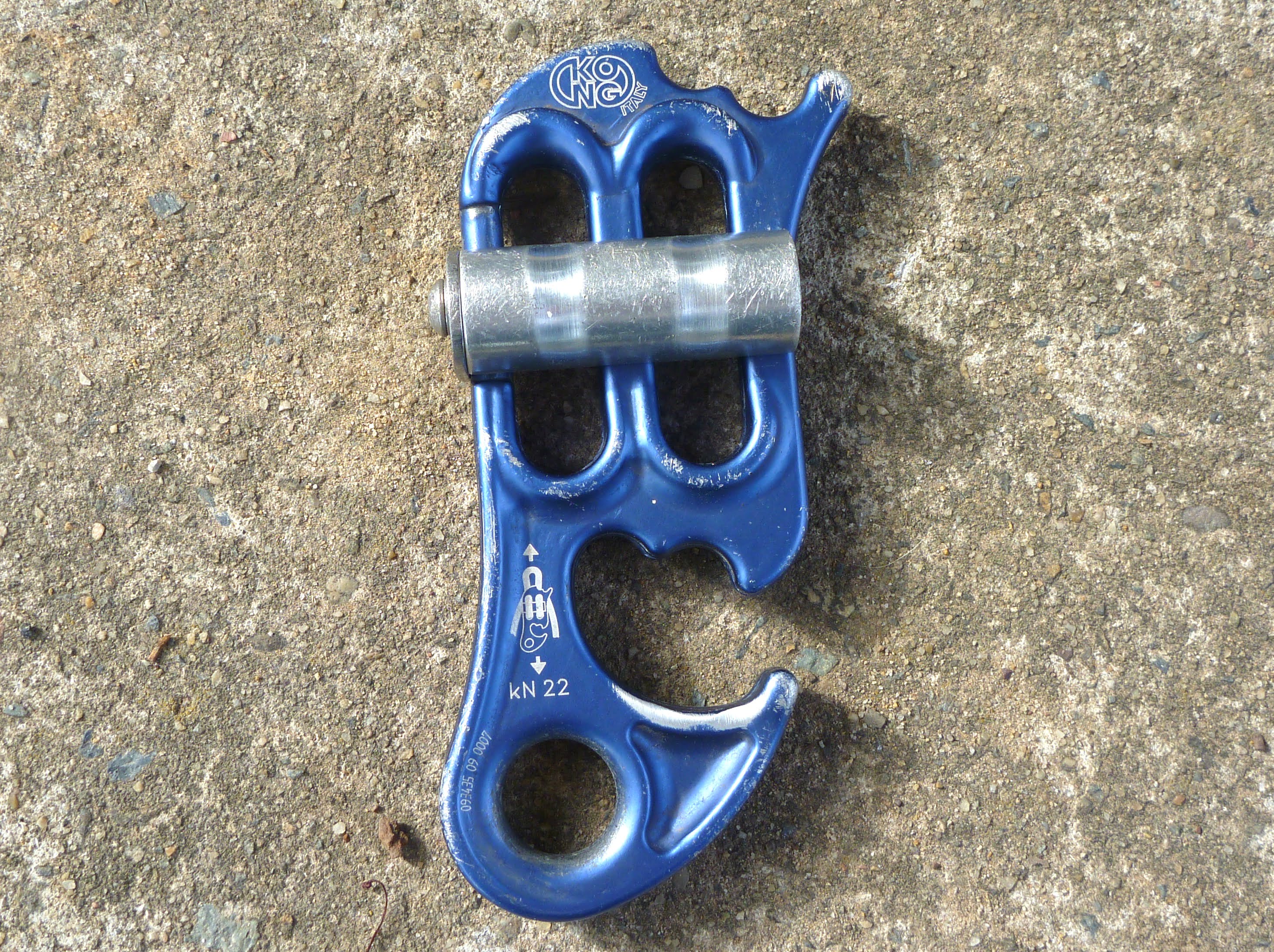When it comes to abseiling / rappelling descenders, there’s no shortage of choices available. Some devices are better suited to single ropes, while others work better on double strands. The kind of canyons you intend to use them in — particularly whether they are wet or dry — also make a big difference to what you will prefer.
In the early days of Blue Mountains canyoning, when people moved beyond the classic technique of using your body as the source of friction on the rope, a common descender was a steel carabiner with a couple steel pitons attached (it might look dodgy, but I’ve tried it and they work surprisingly well). The Kong Hydrobot is basically a just a modern, lightweight reinvention of this classic technique.
For Australian canyons, which rarely involve substantial water flows but often require detaching from the rope while swimming in a pool, this approach has a number of advantages. Firstly, you don’t need to undo your carabiner to get on and off rope (unlike variations on the figure of 8 or ATC’s). This is particularly handy when you are being pummelled by a waterfall in a deep pool, where cold slippery fingers could end up fumbling your device and sending it down into the void below. Sure, you could finish the canyon using a munter hitch, but that’s hardly ideal!
But better than the old classic, the Hydrobot can be rigged in a range of ways that provide different levels of friction for different rope sizes. It can work with single rope, double rope, or even two ropes of different diameters. I have used it to do a 200m abseil on single 9mm rope, shorter single rope drops, double 9mm rope up to 60m, shorter double rope drops on 8mm rope, and even an emergency descent on 6mm cord!
They can also be used as part of an ascending setup (along with a prusik), as well as for belaying or even as part of a hauling system.

There are a couple downsides, like with anything. The device heats up on long, dry drops, given it is smaller than many other options such as a rack. Also, you need to know how to add friction mid-descent, as the default rigging will run quite fast on new, dry ropes. The magnetic bar that flips across the middle — taking the brunt of the ropes force — also seems to wear fairly obviously, especially in the sandy canyon environment. That said, I’m yet to have to retire one of my ‘bots due to excessive wear, and they’ve seen plenty of action.
You should be able to pick one up for about $55, which isn’t bad if you’re after a relatively light, simple, no-nonsense descender which will primarily be used in canyons.
Rating:
- Durability / toughness — 4/5
- Usefulness — 4/5
- Value for money — 4/5
- Overall — 4/5
